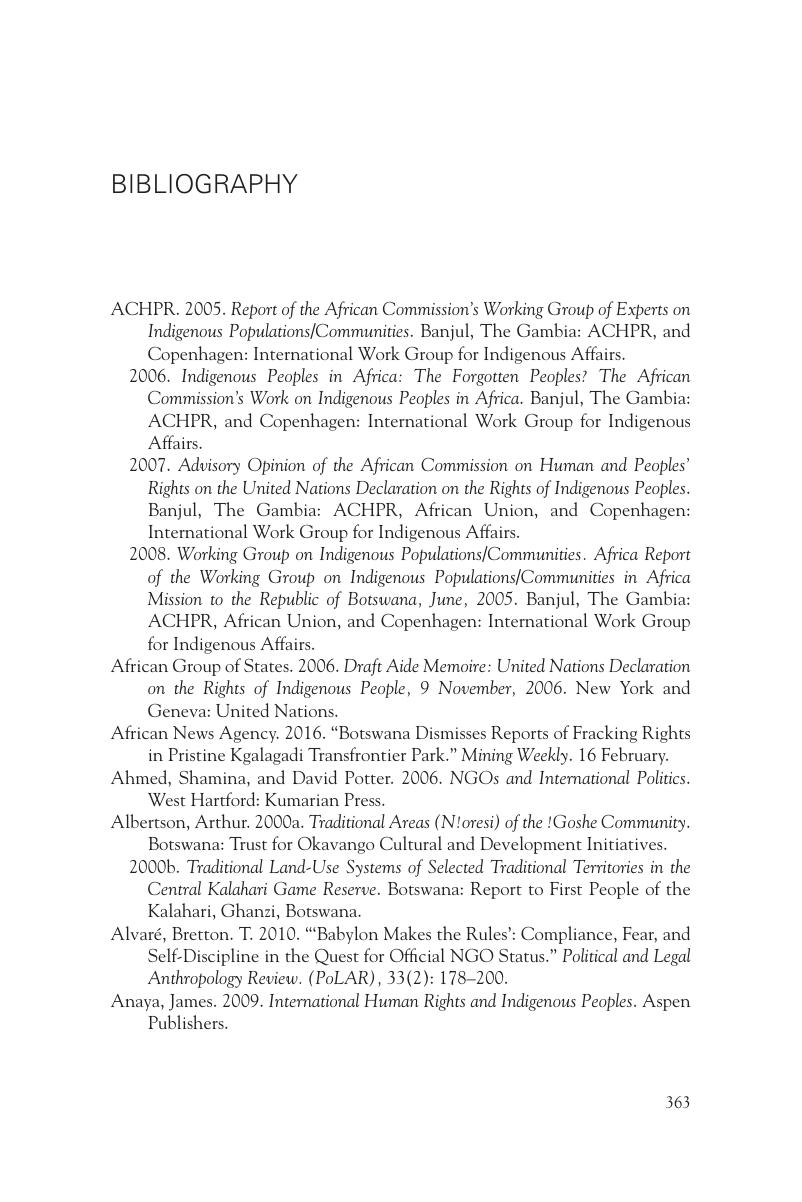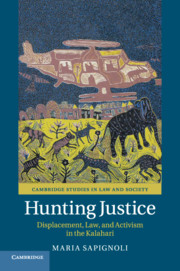Book contents
- Hunting Justice
- Cambridge Studies in Law and Society
- Hunting Justice
- Copyright page
- Dedication
- Contents
- Acknowledgments
- Abbreviations
- Maps
- 1 Introduction
- 2 Unsettling the Central Kalahari
- 3 The “Bushmen Problem”
- 4 Getting Organized: The Social Lives of San NGOs
- 5 The San in the United Nations
- 6 The Court
- 7 After Judgment
- 8 Litigating a Way of Life
- 9 Conclusion
- Notes
- Bibliography
- International Instruments
- Legal Cases
- Index
- Cambridge Studies in Law and Society
- References
Bibliography
Published online by Cambridge University Press: 02 February 2018
- Hunting Justice
- Cambridge Studies in Law and Society
- Hunting Justice
- Copyright page
- Dedication
- Contents
- Acknowledgments
- Abbreviations
- Maps
- 1 Introduction
- 2 Unsettling the Central Kalahari
- 3 The “Bushmen Problem”
- 4 Getting Organized: The Social Lives of San NGOs
- 5 The San in the United Nations
- 6 The Court
- 7 After Judgment
- 8 Litigating a Way of Life
- 9 Conclusion
- Notes
- Bibliography
- International Instruments
- Legal Cases
- Index
- Cambridge Studies in Law and Society
- References
Summary

- Type
- Chapter
- Information
- Hunting JusticeDisplacement, Law, and Activism in the Kalahari, pp. 363 - 392Publisher: Cambridge University PressPrint publication year: 2018



